Costa Rica is a diving paradise, offering a wealth of marine life and diverse underwater landscapes that cater to all levels of diving enthusiasts. With both Pacific and Caribbean coastlines, Costa Rica presents a wide range of diving experiences, from thrilling encounters with large pelagics to exploring vibrant coral reefs and underwater volcanic formations.
Whether you’re looking to dive with hammerhead sharks at Cocos Island, explore the colorful reefs of Cahuita National Park on the Caribbean side, or experience the rich marine biodiversity of Caño Island, Costa Rica is a destination that promises unforgettable underwater adventures.
If you’re combining diving with mainland adventures like La Fortuna or Monteverde, see our Costa Rica travel guide for a complete overview of all destinations and activities.
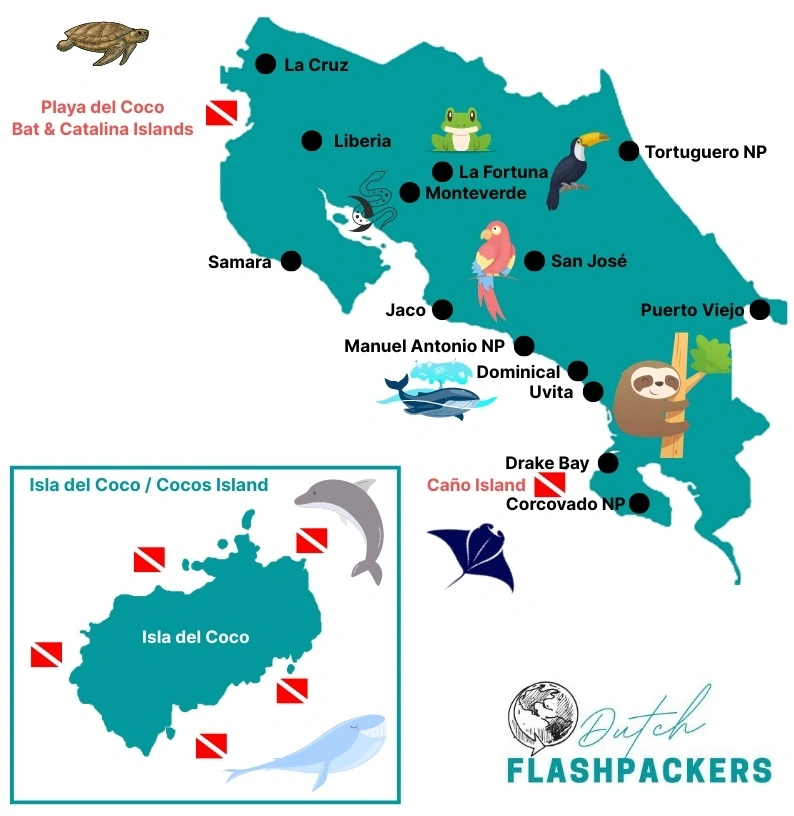
The Best Season to Dive
Costa Rica’s diving conditions vary significantly between its Pacific and Caribbean coasts, each offering distinct diving seasons and unique marine encounters.
Cocos Island
The waters around Cocos Island are best explored from June to November, during the rainy season. Although this period brings more rainfall on land, it also attracts large schools of hammerhead sharks, manta rays, and other big pelagic species due to the nutrient-rich waters. Water temperatures typically range from 22 to 26 degrees Celsius, and visibility can be lower (15-30 meters) due to increased plankton. However, this is also the best time for shark diving and spotting whale sharks.
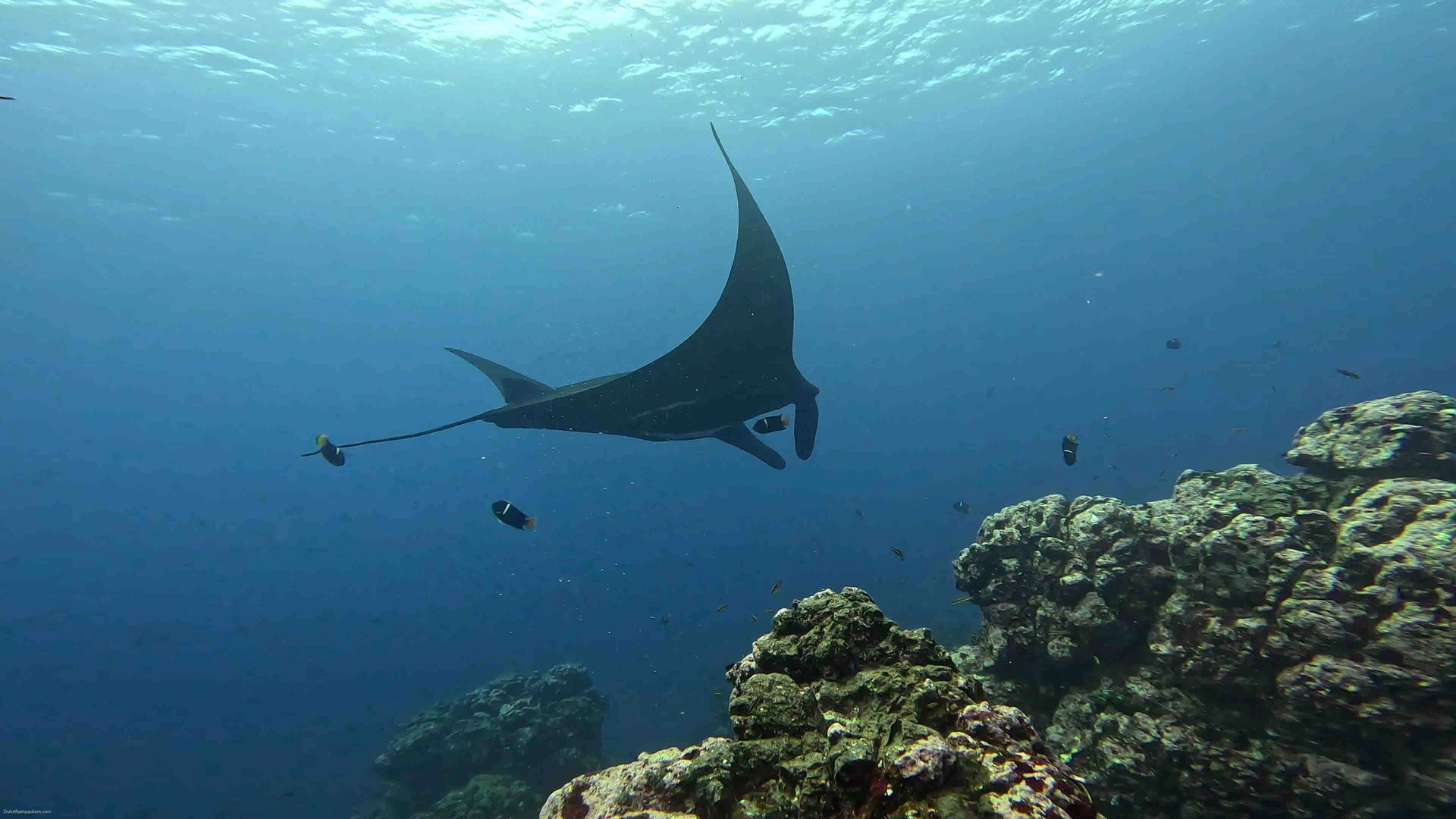
Catalina and Bat Islands
The Catalina and Bat Islands are best visited between December and April, during the dry season. This period offers optimal visibility, often exceeding 20 meters, and warmer water temperatures ranging from 24 to 28 degrees Celsius. Manta rays are frequently spotted around the Catalina Islands during these months, while bull sharks are a highlight at the Bat Islands. This is the prime time for encountering these majestic creatures.
Caño Island
Caño Island, located off the southern Pacific coast near the Osa Peninsula, is another premier diving destination in Costa Rica. Most divers base themselves in Drake Bay, the closest gateway town, which makes it easy to organize dive trips to the island. The diving conditions here are influenced by two primary seasons, although diving is possible year-round.
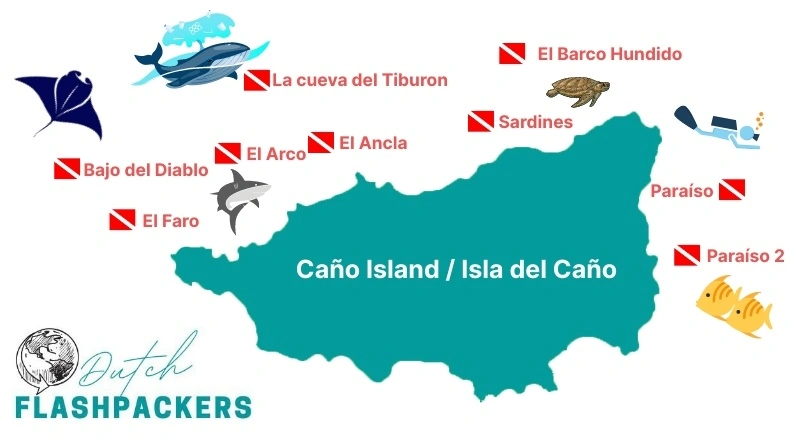
- Manta Ray Season (December to April): During these months, the waters around Caño Island are at their calmest and warmest, with temperatures ranging from 27 to 29 degrees Celsius. This period is the best time to encounter manta rays, which are frequently spotted gliding gracefully through the clear waters. Visibility is often excellent, reaching up to 30 meters, making it ideal for capturing the beauty of the marine life on camera.
- Humpback Whale Season (July to November): This period coincides with the migration of humpback whales, particularly from August to October. Divers and snorkelers have the extraordinary opportunity to witness these majestic creatures as they pass through the waters around Caño Island. While water temperatures may drop slightly (to around 25-27 degrees Celsius), and visibility can be reduced due to plankton blooms, the chance to see humpback whales up close is a highlight that should not be missed.
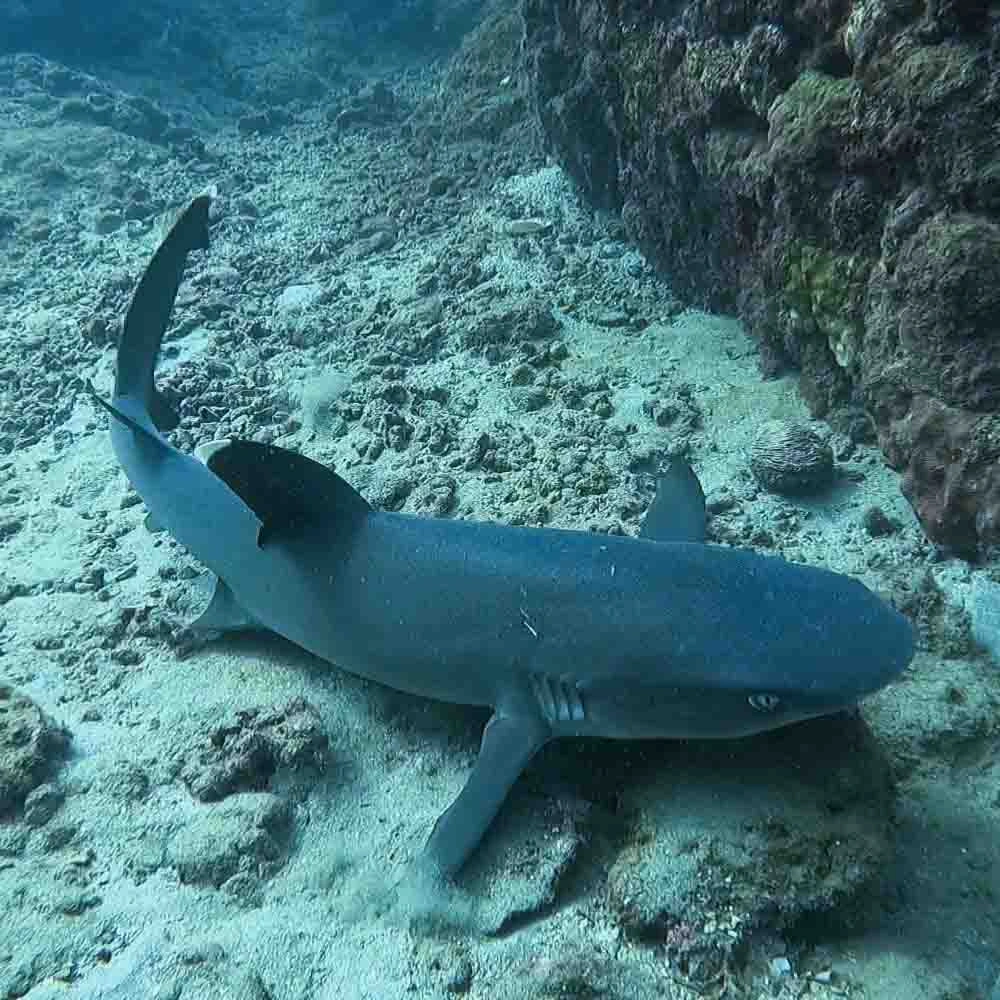
Caribbean Coast
The Caribbean coast offers a contrasting diving experience, with the best conditions from September to October and February to April. During these periods, the waters are calm, and visibility can exceed 30 meters, providing excellent opportunities for exploring coral reefs and encountering diverse marine life, including turtles and colorful tropical fish. Water temperatures on the Caribbean side are warmer, generally around 27 to 29 degrees Celsius, making it ideal for comfortable and relaxed diving.
Diving Costa Rica’s Top Sites
Cocos Island
Cocos Island is undoubtedly Costa Rica’s crown jewel for diving. This remote Pacific island is a UNESCO World Heritage site and one of the best places in the world to dive with large schools of hammerhead sharks. Accessible only by liveaboard, Cocos Island offers advanced diving with strong currents and the possibility of encountering silky sharks, whale sharks, and even occasional sightings of tiger sharks. The island’s underwater seamounts and pinnacles are teeming with life, making every dive an unforgettable adventure.
Most Cocos Island liveaboards depart from Puntarenas on Costa Rica’s Pacific coast. Since the boat ride out to the island takes around 36 hours, many divers choose to extend their trip on the mainland. Popular add-ons include exploring the adventure capital of La Fortuna with its volcano hikes and hot springs, the cloud forests of Monteverde offering a completely different side of Costa Rica, and the wildlife-rich Manuel Antonio National Park, where jungle meets pristine beaches.
Catalina and Bat Islands
The Catalina and Bat Islands, located off the northwestern coast of Costa Rica, are popular diving destinations that showcase the region’s volcanic rock formations and rich marine life. The Catalina Islands, known for their encounters with manta rays, eagle rays, and white-tip reef sharks, offer dives suitable for intermediate divers. The Bat Islands, located further north in the Guanacaste region, are famous for the “Big Scare,” a dive site where you can encounter bull sharks in their natural habitat, providing a thrilling experience for advanced divers. The best time to dive these islands is from December to April when visibility is at its peak, and water temperatures range from 24 to 28 degrees Celsius.
Caño Island
Caño Island is a must-visit diving destination in Costa Rica, known for its incredible biodiversity and crystal-clear waters. The island’s marine reserve is home to vibrant coral reefs, steep drop-offs, and an abundance of marine life, including manta rays, dolphins, sea turtles, and various species of sharks. The underwater topography features pinnacles and canyons, making it an exciting site for divers of all levels. The island is accessible year-round, with distinct seasons for spotting manta rays (December to April) and humpback whales (July to November).
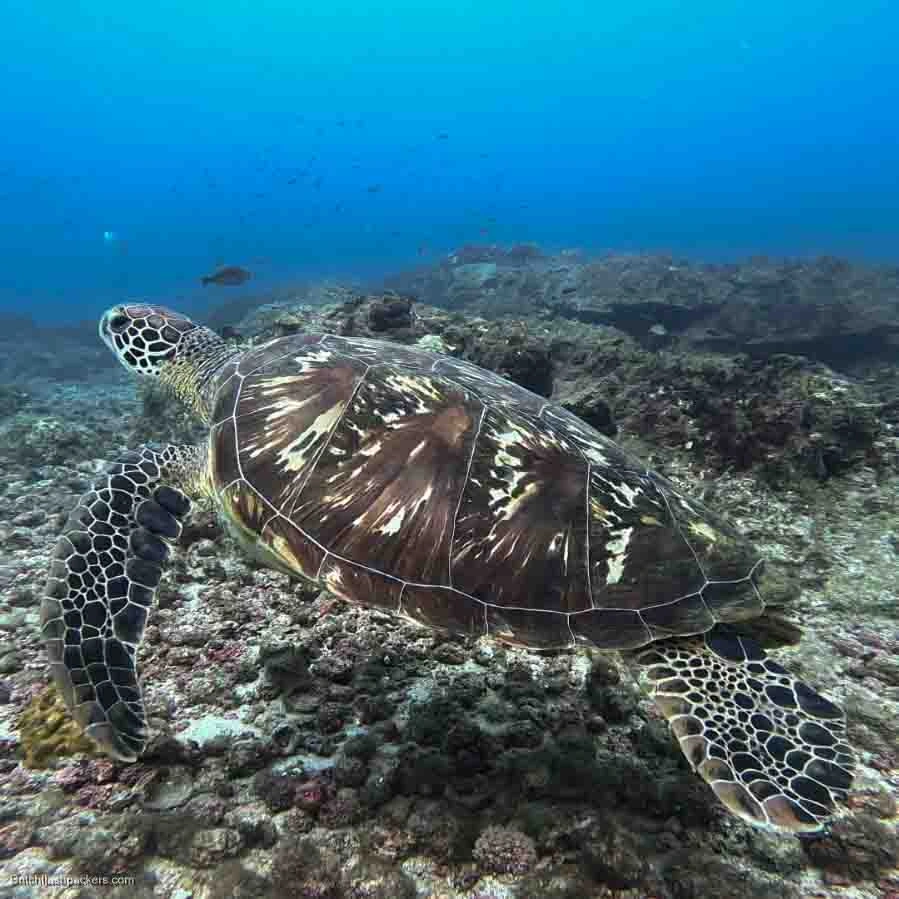
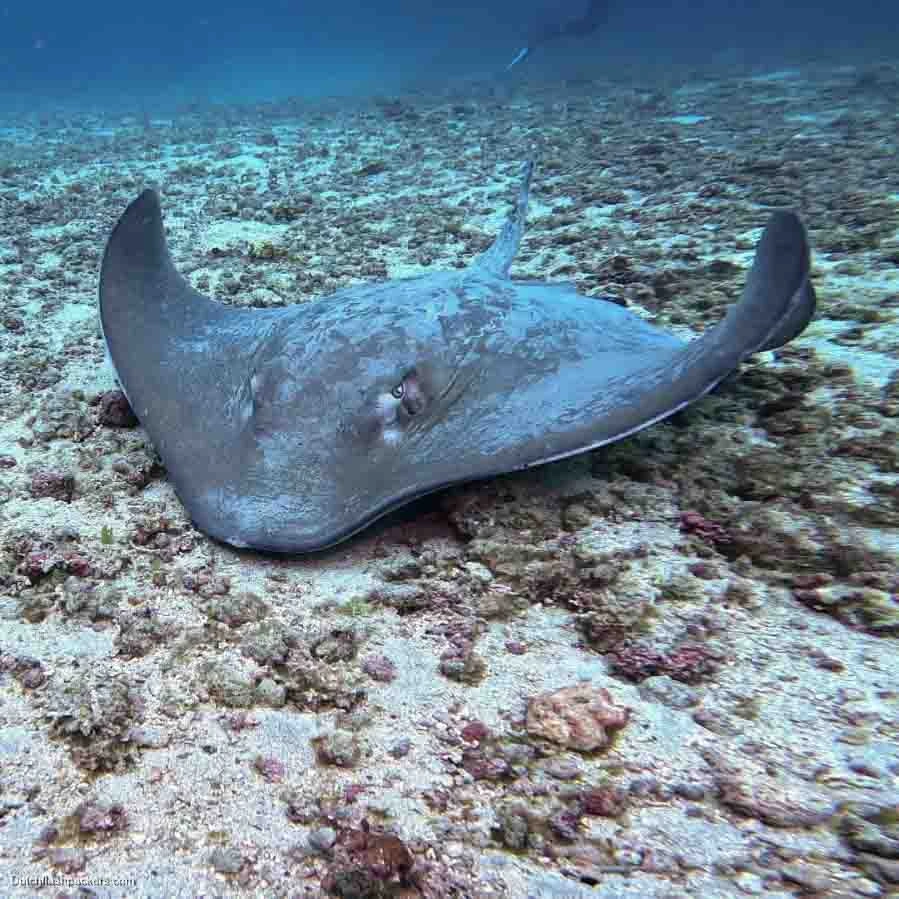
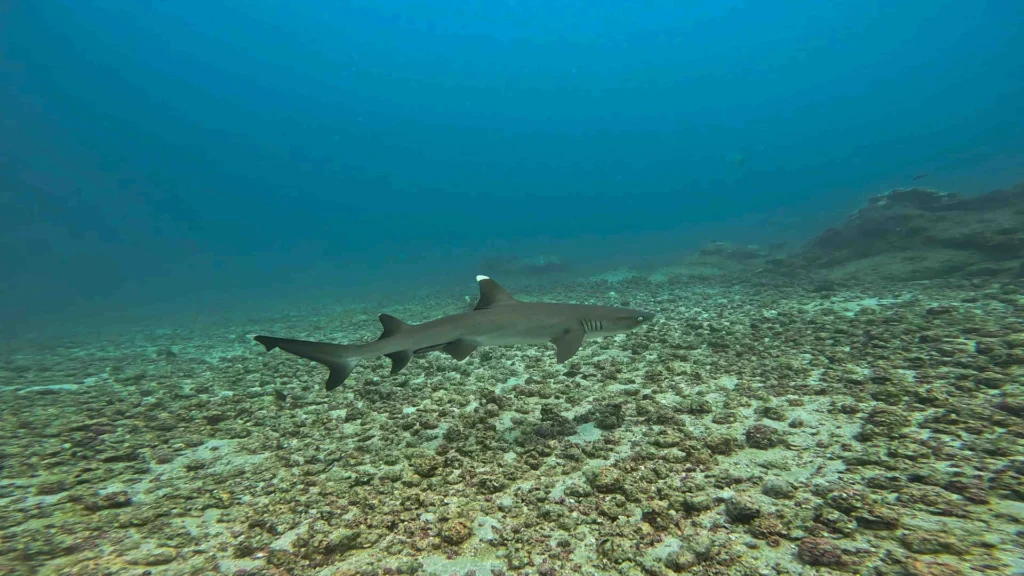
Cahuita National Park
For those diving on the Caribbean side, Cahuita National Park offers a more laid-back experience. This park is home to Costa Rica’s largest coral reef, where divers can explore colorful coral gardens and spot a wide range of marine species, including parrotfish, angelfish, and hawksbill turtles. The warm, clear waters and gentle currents make Cahuita an excellent choice for beginner divers and those looking to enjoy a relaxed dive in a stunning natural setting.
Diving Difficulty and Equipment Recommendations
Costa Rica’s diving sites cater to a wide range of experience levels, with varying conditions that require appropriate preparation and gear.
Cocos Island is an advanced diving destination, recommended for those with at least 50 logged dives and an Advanced Open Water Certification. The strong currents and deep dives demand excellent buoyancy control and experience with drift diving. Water temperatures can be cooler, so a 5mm to 7mm wetsuit, along with gloves and a hood, is advisable for comfort during extended dives.
Catalina and Bat Islands offer a mix of intermediate and advanced diving opportunities. The moderate to strong currents and varying depths make it suitable for divers with some experience. A 3mm to 5mm wetsuit is usually sufficient, but divers should be prepared for occasional thermoclines, especially at the Bat Islands.
Caño Island provides accessible diving for all levels, with calm waters and warm temperatures ranging from 26 to 29 degrees Celsius. A 3mm wetsuit or even a rash guard is typically sufficient. The diversity of dive sites around Caño Island means that both beginners and experienced divers can find sites that match their skill levels.
Cahuita National Park on the Caribbean coast is ideal for beginners and those seeking easy, shallow dives. The warm waters allow for diving in a 3mm wetsuit or even just a rash guard. The calm conditions and vibrant reefs make this site accessible and enjoyable for all levels.
Regardless of the destination, divers in Costa Rica should prioritize safety by following the guidance of experienced dive operators and ensuring they have the right equipment for the conditions. Whether diving with hammerheads at Cocos Island or exploring the coral reefs of Cahuita, Costa Rica offers a rich and rewarding underwater experience that caters to all types of divers.
Help us by supporting our blog
We want to give you honest reviews and keep this blog free. Therefore we added some affiliate links that might give us a commission at no additional cost to you. Support our blog by booking through our partners.

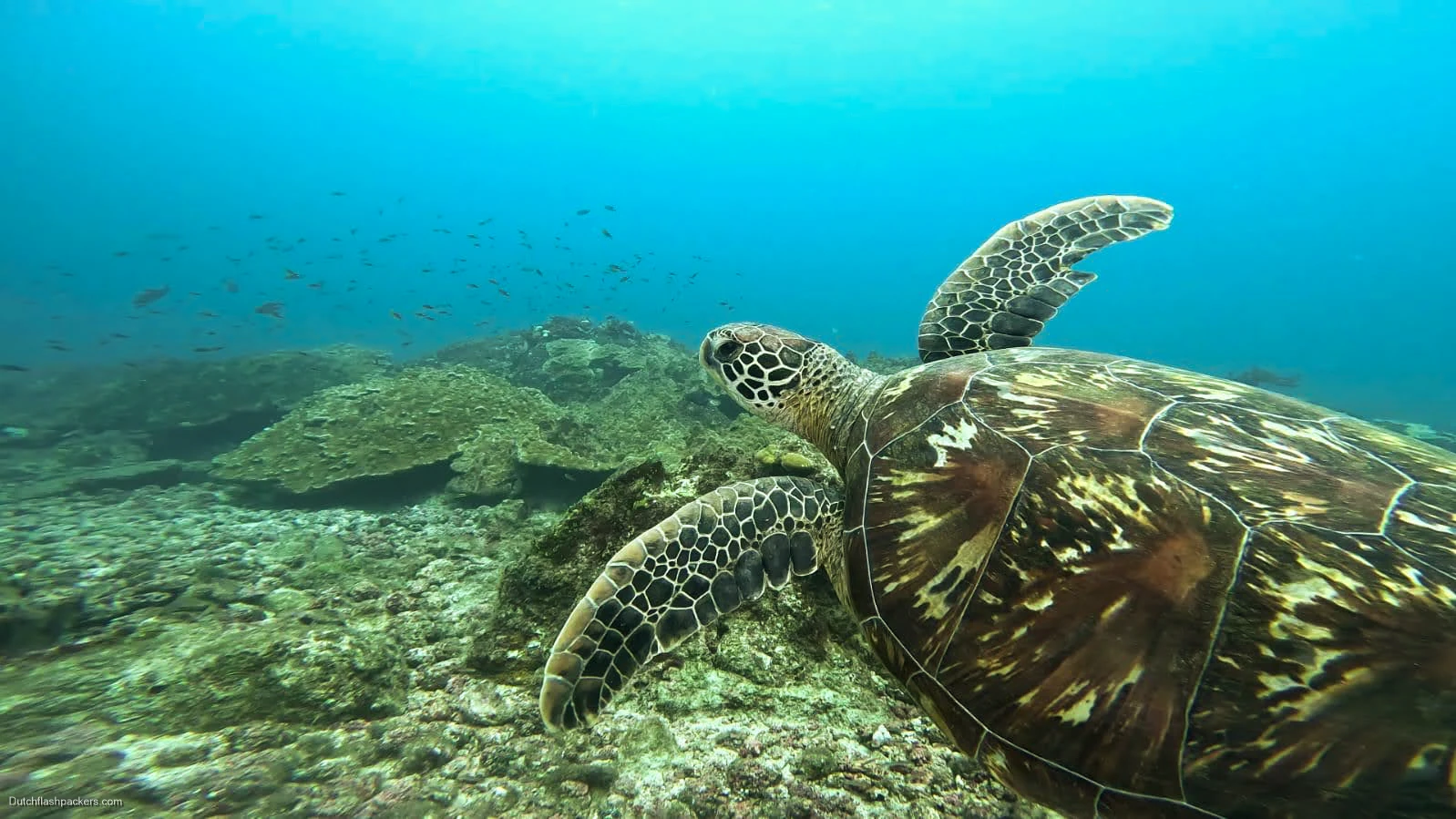
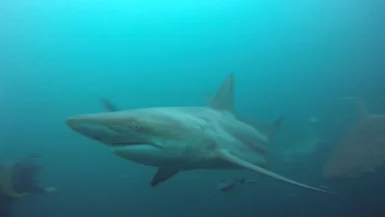
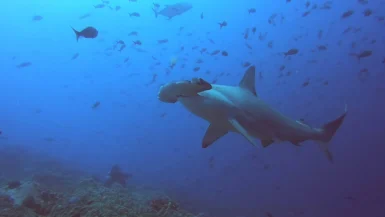
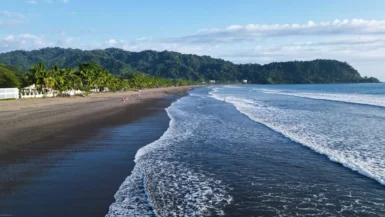
Leave a reply